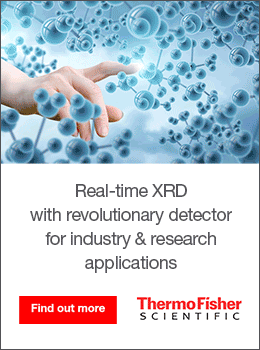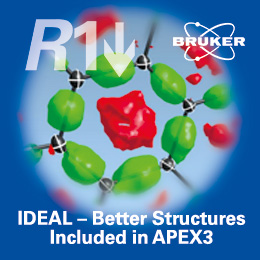


Meeting report (IUCr supported)
Ninth Zürich School of Crystallography
![ZSC-thumbnail [ZSC-thumbnail]](https://www.iucr.org/__data/assets/image/0011/144758/ZSC-thumbnail.png)
The Ninth Zürich School of Crystallography: Bring Your Own Crystals returned from Tianjin, China, where the eighth school took place, to the Department of Chemistry at the University of Zürich, Switzerland, from 16 to 27 June 2019. The 20 participants (12 female) comprised 1 BSc, 1 MSc and 15 PhD students, 1 postdoc and 2 junior academics. They came from 13 countries: Brazil, Croatia, Finland, Germany, Greece, Hong Kong, India, Morocco, Portugal, Russia, Slovenia, Switzerland and Tunisia.
The central goal of the school is to equip each participant with enough knowledge of the theory and practice of X-ray diffraction and single-crystal small-molecule structure determination so that they can competently determine their own structures when they return to their home laboratory. The daily schedule is a blend of lectures, exercises and practical work.
In our experience, symmetry is a notoriously difficult topic. In addition to lectures, we use tutorials with small groups of five students and one or two tutors, which has proven to be effective.
![[ZSC-fig1]](https://www.iucr.org/__data/assets/image/0003/144759/ZSC-fig1.png)
![[ZSC-fig2]](https://www.iucr.org/__data/assets/image/0004/144760/ZSC-fig2.png) Students with Céline Besnard (left) and Pascal Schouwink (right).
Students with Céline Besnard (left) and Pascal Schouwink (right).
On the third day, the students worked with the crystals they had brought to the school; they selected a crystal, put it on one of the five diffractometers accessible at ETHZ and UZH, and measured and processed a dataset. The diffractometers included the modern Bruker Venture D8 and Rigaku Oxford Diffraction Synergy instruments, which are impressive in terms of speed, the availability of two radiation wavelengths and detector sensitivity.
In preparation for interpreting their own data, the students solved three example structures of varying degrees of difficulty that were designed to allow the participants to see behind the button pushing, to learn about the actual procedures going on when various operations are performed and to interpret whether or not appropriate results are obtained. Each participant then works on the dataset collected from their own sample.
In our fully equipped computer classroom, we used the Olex2 software once again this year and found it to be quite suitable in the school environment. The ease of use of Olex2 allows us to demonstrate more aspects of structure solution and refinement in a shorter time. The ever-expanding range of special tools and options in the program for easy handling of special modelling issues, such as disorder, is very useful. As usual, we had our very popular 2:1 student:tutor ratio.
Each day concluded with a short discussion where participants could express their feelings about their experience that day. All of the participants were very enthusiastic and their eagerness and dedication were maintained throughout the school. Some were just getting their feet wet in the field of crystallography, whereas others were more experienced, but all participants came away having learned something new and feeling better equipped to tackle structure determination on their own. Everyone mixed well, chatted eagerly together and became friends. When the youngest participant, Liza, had her birthday midway through the school, her companion students got her cakes and candles and sang…
On the final day, each participant sat a two-hour written exam either to obtain ECTS credit points or to self-test their knowledge.
At the end of each afternoon, after the classes and feedback session were over, the day was not yet finished. Students and tutors ate dinner together and got to know each other on a more personal level. It is not unusual for the tutors to be asked to clarify undigested course material after the meal and sometimes deep into the night.
Before returning home, all participants met for a Chinese banquet. Each participant received a certificate and a copy of Crystal Structure Refinement, a Crystallographer's Guide to SHELXL by Peter Müller, kindly donated by the IUCr and OUP.
The questionnaire filled in by the participants provided overwhelmingly positive feedback. The perennial criticism is the intensity of the school. Participants often wish for more breaks so they can digest the content better. To do so would add accommodation costs and require more time commitment from our team of dedicated tutors, so we feel people have to accept that it is an intense block course, unlike a semester course. The personal impressions of two participants are given below.
We gratefully acknowledge the generosity of the sponsors and supporters: Department of Chemistry of the University of Zürich; Swiss Society of Crystallography; Cambridge Crystallographic Data Centre; European Crystallographic Association; IUCr; Oxford University Press; Rigaku Oxford Diffraction; Dectris Ltd; Oxford Cryosystems; Bruker AXS; Hotel Coronado, Zürich; the Chemistry Platform of the Swiss Academy of Sciences and Michael Woerle for taking many photographs, some of which are in this report.
Guratinder Kaur (Paul Scherrer Institute, Switzerland)
![[ZSC-fig3]](https://www.iucr.org/__data/assets/image/0005/144761/ZSC-fig3.png)
It is an honour and pleasure to pen down my experience during "The Zürich School of Crystallography 2019", which has excelled in terms of the quality of teaching, tutorial sessions, layout of the course and the venue. When I started my PhD in October 2016, I heard about this school but the deadline had already passed so unfortunately, I could not apply for it. I felt terribly sad and since then I had been waiting for the next announcement. The wait came to an end in 2019 and has been worthwhile.
Initially I was bit concerned about the duration and the efficiency of the school as usually such long-term schools or workshops fail to stay consistent throughout the mentioned time span. This school has exceeded all my expectations as it was such an incredible platform for beginners in crystallography. I was amazed with the versatility of the course module including international participants with entirely different academic backgrounds. My other major concern was how intense the course was going to be; however, small tea/coffee breaks during the day and a carefully planned schedule made everything absolutely effortless. There must be a delicate balance that has to be maintained to keep the participants interested and motivated until the end. After attending the school, my experience is that organizers have spent significant time working out the best way to arrange everything, and this made a huge success of ZSC19. The atmosphere of the university and the two students per one tutor ratio were incredible. The accommodation in the hotel is just perfect as it is so convenient and relaxing to commute.
I had never taken a course in crystallography before, but after attending this school, I feel that I would not have had more success at any other school. Having started my PhD in diffraction, I really had a hard time understanding my research problems. In fact, I lacked the vision to appreciate the beauty of symmetry and crystallography. These are somewhat difficult concepts and were thoroughly explained in several ways to us by the tutors at ZSC19 who were so passionate about teaching and sharing their experiences with the participants and very eager to answer questions at any time, participating in never-ending scientific discussions with the students – even until late in the evening!
As crystallography is a fundamental concept used in almost every scientific field, I was skeptical about the several different topics that may have little relevance to my work. However, this was not the case and I learnt a lot from all the talks. The invaluable practical sessions were excellent, especially being able to analyze the data from our own crystals as well as data that were also obtained on the instruments in our home institutions. Interacting with tutors and other participants and socializing with them was great. It was so motivating and rewarding that, at the end of a day, one can actually give his/her sincere opinions about the lectures and practical sessions as feedback.
From this course I feel that I have enhanced and refined my knowledge of crystallography and also how to implement this tool to tackle difficult research problems. This knowledge is crucial for my current position as well as in my future career, and hopefully I will be able to use and pass on this information further in the near future. The course has exposed me to one of the most beautiful disciplines and given me an appreciation for crystallography. I lacked confidence in this area before coming here. I highly recommend this course to anyone who wants to see the world of crystallography under the guidance of its pioneers. Once again, I must say, hats off to the commendable job done by the organizers. Thank you!
Helena Brodnik Žugelj (University of Ljubljana, Slovenia)
![[ZSC-fig4]](https://www.iucr.org/__data/assets/image/0006/144762/ZSC-fig4.png)
As an organic chemist I am always faced with the uncertainty of synthesizing the correct product. And even though there are several methods to help determine what compound you have prepared, I believe that having an X-ray structure of that compound indubitably confirms what you hold in your hand.
For those who wish to learn the theoretical background and gain practical experience of X-ray diffraction from the very beginning (how to grow your crystals) to the final touches at refining and publishing your structure, then the Zürich School of Crystallography is the best way to do it. Looking back at my experience I can honestly say I would do it again. Even though it is an intense 10-day course covering both theory and experimental work, the amount of knowledge and level of expertise presented gives you valuable experience you will never forget. It is a highly interactive school, as you get the chance to work on a diffractometer, as well as gain as much theory needed to later solve your own crystal structures. An important value the school offers is being able to work, study and debate with ten highly experienced crystallographers, who become your tutors for the whole time in Zürich. Each tutor is assigned only two participants, which makes this school a luxurious opportunity to obtain valuable knowledge. During the school the tutors are always available and willing to help you understand certain topics you find yourself struggling with. From my point of view, the friendliness and level of expertise of all the tutors truly places this school at the very top.
The motto of the Zürich School of Crystallography is “bring your own crystals”, which means you are given the opportunity to send your crystals prior to your visit, so you can work on your structure once you are there. This is especially valuable for those who struggle with solving more difficult structures. Hence, having so many experts at hand can really help you understand and solve your structure.
The school was very well organized as all the lectures and exercises were carried out smoothly. Everything is prepared before you even arrive from lecture notes, meals and coffee breaks to social events etc. Moreover, all the participants stay in the same hotel near the University of Zürich, which not only makes it convenient for getting to class on time, but also gives you the opportunity to socialize with other participants. To spend almost two weeks day and night with a group of people definitely creates new friendships that will last long after you say your goodbyes.
To be given the opportunity to be a part of the 2019 Zürich School of Crystallography not only enriched my understanding of crystallography, from which I will most definitely benefit in my professional field, but also gave me the chance to meet some amazing people who made my stay truly unforgettable.
Copyright © - All Rights Reserved - International Union of Crystallography






